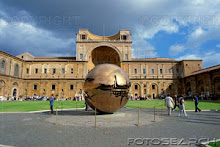
There are two initials that identify vehicles registered in the Vatican Automobile Register: SCV, for vehicles belonging to the Vatican City State and Departments of the Holy See; CV for vehicles that are the property of Vatican citizens and individuals who, in agreement with Italian authorities, are allowed to register their vehicles in Vatican City. The international abbreviation is V.
The transportation system in Vatican City, a country 1.05 km long and 0.85 km wide is a small transportation system with no airports or highways. Given the average walking speed of 3.6 km/h , people could walk from one end of Vatican City to the other in 20 minutes or less. Thus, much of the infrastructure in the Vatican consists of St. Peter's Square itself, hallways and aisles in the basilica and surrounding buildings, and walkways behind and between the buildings. There is a heliport in the western corner of the city-state that is used for visiting heads and officials of the Holy See. Rome is served by two airports which are used by travellers to the Vatican.
The transportation system in Vatican City, a country 1.05 km long and 0.85 km wide is a small transportation system with no airports or highways. Given the average walking speed of 3.6 km/h , people could walk from one end of Vatican City to the other in 20 minutes or less. Thus, much of the infrastructure in the Vatican consists of St. Peter's Square itself, hallways and aisles in the basilica and surrounding buildings, and walkways behind and between the buildings. There is a heliport in the western corner of the city-state that is used for visiting heads and officials of the Holy See. Rome is served by two airports which are used by travellers to the Vatican.
Railway
Main article: Rail transport in Vatican City
There is a short 852 metre or 932 yard standard gauge (1435 mm or 4 ft 8½ in) railway that connects to surrounding Italy's network at the Saint Peter's station in the capital of Rome. The station was designed by architect Giuseppe Momo and was constructed during the reign of Pope Pius XI after the conclusion of the Lateran Treaties and opened in 1933 but now houses shops. The railway was originally planned to transport pilgrims, as was intended during the reign of Pius XI, but has only been rarely used to transport passengers. Pope John XXIII was the first to make use of the railway, and Pope John Paul II was known to have used it as well very rarely. The railway is mainly used only to transport freight. Rome Metro line A passes the country at Ottaviano and Cipro-Musei Vatican. Both stops are a ten minute walk away from the city-state.





No comments:
Post a Comment